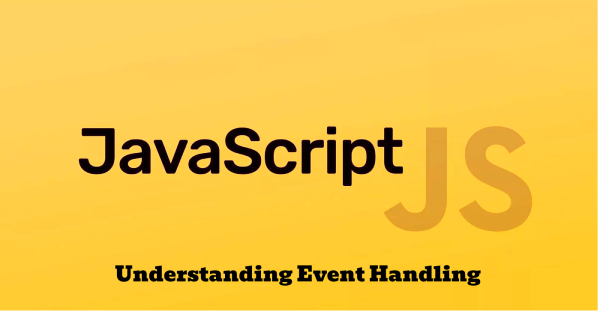Master AI & Build your First Coding Portfolio with SkillReactor | Sign Up Now
Understanding Event Handling in JavaScript

Event handling in JavaScript is an important concept in web development, allowing web applications to respond dynamically to user interactions. Event handling involves two main components: the event and the event handler.
What is Event Handling?
Event handling refers to the process of listening for and responding to events in the web environment. An event can be anything from a simple mouse click to a more complex browser action like a page load. When such events occur, JavaScript provides a way to execute specific functions or actions in response, known as event handlers.
What is an Event Handler?
An event handler is a function in JavaScript that is executed when a specific event occurs. These handlers are attached to HTML elements and are triggered by various user actions or browser triggers. For instance, a button element might have an event handler that listens for clicks and executes code when the user clicks on the button.
Example of Setting Up an Event Handler
To better understand event handlers in practice, consider the following example:
// JavaScript code to attach a click event handler to a button document.getElementById('exampleButton').addEventListener('click', function(event) { alert('Button was clicked!'); });
In this example, a click event listener is added to a button with the ID exampleButton. When the button is clicked, the event handler function (which shows an alert) is executed. This demonstrates how JavaScript can respond to user interactions, in this case, a button click.
Adding and Removing Event Listeners
In addition to setting up event handlers, managing event listeners is crucial. The addEventListener method is used to attach an event handler to an element, and removeEventListener is used to remove it. This management is key to performance and memory efficiency, especially in dynamic applications.
Syntax for Adding an Event Listener:
element.addEventListener('click', function(event) { // handle the click event });
Syntax for Removing an Event Listener:
element.removeEventListener('click', handleClick);
The Role of the Event Object
Within the context of event handling, the event object plays an important role. When an event occurs, JavaScript creates an event object that contains information about the event. This object is automatically passed as a parameter to the event handler function. It includes numerous properties and methods that provide detailed context about the event, such as its type, the target element, and its current phase in the event flow.
Key Properties of the Event Object
- type: Indicates the type of the event (e.g., 'click', 'keydown').
- target: References the DOM element that was the actual target of the event.
- currentTarget: Refers to the element to which the event handler is attached.
- eventPhase: Indicates the current phase of the event (capturing, target, or bubbling).
Understanding these aspects of the event object is important for writing effective event handlers. It allows developers to create responsive, user-driven web applications by leveraging context-aware responses to user actions.
Event handling in JavaScript is all about creating interactive web applications that respond appropriately to user inputs and browser actions. It's a combination of understanding how to set up event listeners, write event handler functions, and utilize the event object to create a dynamic user experience.